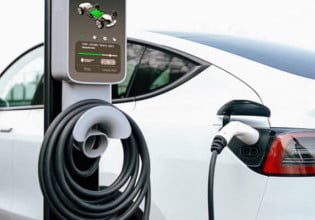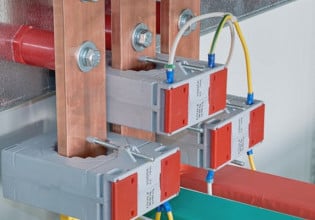National Electrical Code 2023 Basics: Grounding and Bonding Part 9
Learn the grounding and bonding rules for portable, trailer-mounted, vehicle-mounted, and permanently installed generators.
To catch up on Lorenzo Mari’s series on National Electrical Code 2023 Basics: Grounding and Bonding, please follow these links:
- National Electrical Code 2023 Basics: Grounding and Bonding Part 1
- National Electrical Code 2023 Basics: Grounding and Bonding Part 2
- National Electrical Code 2023 Basics: Grounding and Bonding Part 3
- National Electrical Code 2023 Basics: Grounding and Bonding Part 4
- National Electrical Code 2023 Basics: Grounding and Bonding Part 5
- National Electrical Code 2023 Basics: Grounding and Bonding Part 6
- National Electrical Code 2023 Basics: Grounding and Bonding Part 7
- National Electrical Code 2023 Basics: Grounding and Bonding Part 8
Generators can be mounted permanently in remote areas without electrical service and as a temporary source or backup power. NEC’s Section 250.34 regulates portable, trailer-mounted, and vehicle-mounted generators, while Section 250.35 deals with permanently installed generators.

Generators can be mounted permanently in remote areas without electrical service and as a temporary source or backup power. Image used courtesy of Generac
National Electrical Code Section 250.34
Section 250.34 covers the grounding and bonding of portable, vehicle-mounted, and trailer-mounted generators.
Section 250.34(A) Portable Generators
This section deals with portable generators. Portable means an easily transported generator. See Figure 1.

Figure 1. Portable generator. Image used courtesy of Pixabay
There is no need to connect the generator’s frame to a grounding electrode–like a ground rod or water pipe–if (see Figure 2)
- The generator only feeds equipment mounted on the generator
- The generator feeds cord-and-plug-connected equipment, such as tools and appliances, via affixed receptacles
- Both of the above occur simultaneously
- The equipment grounding conductor terminals on the receptacle, the equipment non-current-carrying parts, and the generator frame are connected.

Figure 2. Grounding connections in a portable generator when acting as an independent supply. Image used courtesy of Lorenzo Mari
The rules mentioned above permit the frame to act as the grounding point instead of the grounding electrode system.
Bonding the neutral to the frame is mandatory when the generator is an independent supply.
Figure 3 shows a portable generator connected to a transfer panel. Note that this panel does not transfer the neutral, so this is not a separately derived system. In this case, do not bond the generator neutral to the frame – this bond would produce a parallel path for the neutral current.

Figure 3. A portable generator connected to a transfer panel. Image used courtesy of Lorenzo Mari
Section 250.34(B) Trailer- or Vehicle-mounted Generators
This section covers generators mounted on trailers and vehicles (see Figure 4). It is not required to connect the generator’s frame to a grounding electrode if
- The generator frame is attached to the vehicle or trailer frame – the structure acts as a grounding point
- The generator only feeds equipment placed on the vehicle or trailer
- The generator supplies cord-and-plug-connected equipment through affixed receptacles.
- Both of the above simultaneously
- The equipment grounding conductor terminals on the receptacle, the equipment non-current-carrying parts, and the generator frame are connected

Figure 4. Trailer-mounted generator. Image used courtesy of Generac
The neutral conductor, when available, must be bonded to the generator or vehicle frames if the system is separately derived–the generator supplies equipment and receptacles affixed on the vehicle or trailer.
Since Article 100 defines ground as “the earth,” the systems covered by sections 250.34(A) and 250.34(B) are ungrounded.
Section 250.34(C) Grounded Conductor Bonding
This section covers the bonding of the generator’s grounded conductor.
Section 250.26 lists the conductors to be grounded in AC systems. When the generator–portable, trailer- or vehicle-mounted–is a component of a separately derived system and contains a conductor to be grounded, this conductor must be bonded to the generator frame, providing a ground-fault current path to return to the generator.
Examples are single-phase, three-wire, 240/120-volt; three-phase, four-wire, wye-connected; and three-phase, four-wire, delta-connected generators.
Figure 5 shows a panel that transfers the neutral, establishing a separately derived system where the generator is a component. Note that the trailer or vehicle frame acts as the grounding electrode.

Figure 5. Generator as a component of a separately derived system. Image used courtesy of Lorenzo Mari
Ground the portable, trailer- or vehicle-mounted generators per Section 250.30, “Grounding separately derived AC systems,” when they feed fixed wiring systems external to the generators.
National Electrical Code Section 250.35
Section 250.35 covers the grounding and bonding of permanently installed generators.
This section requires installing a conductor with the supply conductors from the generator to the first disconnecting means–to provide an effective ground-fault current path and clear the faults correctly. There are specific rules for separately derived and nonseparately derived systems.
Section 250.35(A) Separately derived systems
A separately derived system switches the neutral conductor in the transfer panel. Apply the wiring rules in Section 250.30 when the generator is a piece of a separately derived system.
Section 250.35(B) Nonseparately derived systems
Connecting the generator and building neutrals permanently through a transfer switch establishes a nonseparately derived system.
There are two ways to size the conductor that provides an effective ground-fault-current path, depending on the location of the overcurrent protective device for the generator output.
- Overcurrent protective device integral to the generator
- Overcurrent protective device outside the generator
When the overcurrent protective device is integral with the generator, size the conductor per Section 250.102(D) “Equipment bonding jumper on the load side of the overcurrent device.” Section 250.102(D) forwards to Section 250.122, which establishes the minimum size for wire-type equipment grounding conductors according to Table 250.122.
Example 1. Compute the minimum size of the equipment grounding conductor to be run with the supply conductors of a generator having a 200 A internal automatic overcurrent device.
Answer. Enter Table 250.122 with 200 A and read size N° 6 AWG copper or N° 4 AWG aluminum.
When the overcurrent protective device is outside the generator, size the conductor per Section 250.102(C) “Supply-side bonding jumper.” Section 250.102(C)(1) refers to Table 250.102(C)(1) to get the minimum supply-side bonding jumper size.
Section 250.102(C)(2)(1) permits the connection of individual bonding jumpers in each raceway or cable for installations of parallel conductors in two or more raceways or cables.
Example 2. Compute the minimum size of individual supply-side bonding jumpers per raceway for a system having two ungrounded conductors size N° 350 kcmil in parallel per phase from the generator to the first disconnecting means.
Answer. Enter Table 250.102(C)(1) with conductor size N° 350 kcmil and read size N° 1/0 AWG aluminum or N° 2 AWG copper.
Figure 6 shows a nonseparately derived system with integral overcurrent protection in the generator. The conductor connecting the generator equipment grounding terminal with the transfer switch is an equipment grounding conductor.
It is not permitted to connect the grounded conductor to the ground in both sources simultaneously, as this practice could create parallel paths for the neutral current. Figure 6 shows generator supply conditions with the neutral grounding connection on the generator side.
Notice that the transformer grounding–a common practice–belongs to the utility company and not to the premises. Take care of this ground connection not to create parallel paths for the neutral current.

Figure 6. Nonseparately derived system–internal overcurrent device–grounding on the generator side. Image used courtesy of Lorenzo Mari
Figure 7 shows the effective ground-fault current path for the system shown in Figure 6. Notice that the route includes the equipment grounding conductor.

Figure 7. Effective ground-fault current path–nonseparately derived system–grounding on the generator side. Image used courtesy of Lorenzo Mari
Figure 8 shows the effective ground-fault current path for the same system but grounded on the service side – still under generator supply conditions. Notice that the fault current returns to the generator through the neutral conductor, not the equipment grounding conductor, because there is no connection between the generator frame and the neutral point.

Figure 8. Effective ground-fault current path–nonseparately derived system–grounding on the service equipment side. Image used courtesy of Lorenzo Mari
Figure 9 shows the effective ground-fault current path with an overcurrent protective device external to the generator. Under this configuration, the fault current returns to the generator through the neutral conductor, not the supply-side bonding jumper.

Figure 9. Effective ground-fault current path–nonseparately derived system–overcurrent protection not integral with the generator. Image used courtesy of Lorenzo Mari
Figures 7, 8, and 9 show effective ground-fault current paths (see Article 100 “Definitions”), which are low impedance, intentionally constructed, electrically conductive paths designed to carry the ground-fault current from the point of a ground fault to the supply source. These figures also show the way through the ungrounded conductors and the overcurrent protective devices to complete the electric circuit. The grounded conductor (neutral) is a component of the ground-fault current path.
Key Takeaways of Grounding and Bonding Generators
- The metal frame of a portable generator may act as a grounding electrode under some conditions.
- Under certain conditions, the metal frame or chassis of the vehicle or trailer where a generator is mounted can serve as the grounding electrode.
- Connect to the generator frame any conductor that must be grounded if the generator is a component of a separately derived system.
- The supply conductors of a permanently installed generator must include a conductor providing an effective ground-fault current path.
Featured image used courtesy of Adobe Stock






